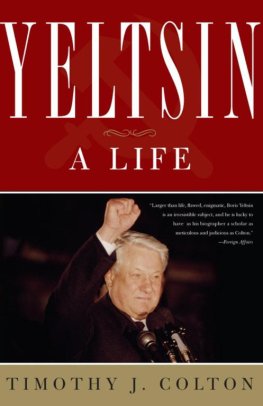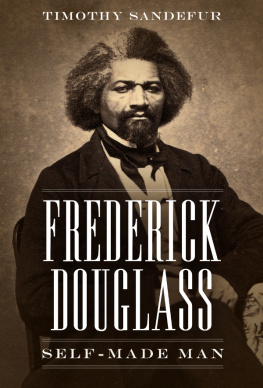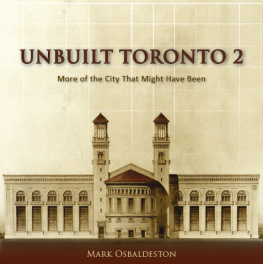Timothy J. Colton - Big Daddy: Frederick G. Gardiner and the Building of Metropolitan Toronto
Here you can read online Timothy J. Colton - Big Daddy: Frederick G. Gardiner and the Building of Metropolitan Toronto full text of the book (entire story) in english for free. Download pdf and epub, get meaning, cover and reviews about this ebook. year: 1980, publisher: University of Toronto Press, genre: Non-fiction. Description of the work, (preface) as well as reviews are available. Best literature library LitArk.com created for fans of good reading and offers a wide selection of genres:
Romance novel
Science fiction
Adventure
Detective
Science
History
Home and family
Prose
Art
Politics
Computer
Non-fiction
Religion
Business
Children
Humor
Choose a favorite category and find really read worthwhile books. Enjoy immersion in the world of imagination, feel the emotions of the characters or learn something new for yourself, make an fascinating discovery.

- Book:Big Daddy: Frederick G. Gardiner and the Building of Metropolitan Toronto
- Author:
- Publisher:University of Toronto Press
- Genre:
- Year:1980
- Rating:3 / 5
- Favourites:Add to favourites
- Your mark:
- 60
- 1
- 2
- 3
- 4
- 5
Big Daddy: Frederick G. Gardiner and the Building of Metropolitan Toronto: summary, description and annotation
We offer to read an annotation, description, summary or preface (depends on what the author of the book "Big Daddy: Frederick G. Gardiner and the Building of Metropolitan Toronto" wrote himself). If you haven't found the necessary information about the book — write in the comments, we will try to find it.
Timothy J. Colton: author's other books
Who wrote Big Daddy: Frederick G. Gardiner and the Building of Metropolitan Toronto? Find out the surname, the name of the author of the book and a list of all author's works by series.
Big Daddy: Frederick G. Gardiner and the Building of Metropolitan Toronto — read online for free the complete book (whole text) full work
Below is the text of the book, divided by pages. System saving the place of the last page read, allows you to conveniently read the book "Big Daddy: Frederick G. Gardiner and the Building of Metropolitan Toronto" online for free, without having to search again every time where you left off. Put a bookmark, and you can go to the page where you finished reading at any time.
Font size:
Interval:
Bookmark:
Big Daddy
Frederick G. Gardiner and the Building of Metropolitan Toronto
Frederick Gardiners public life was rich and long, from his initiation into politics as a Toronto schoolboy before the First World War, through his involvements with the Ontario Conservative party and suburban politics in the 1930s and 1940s, on through his years as first chairman of Metropolitan Toronto (1953-61), to the relinquishing of his last public office in 1979.
This is a readable and perceptive biography of the exuberant and powerful politician who captured the public imagination of Toronto and created a legend around himself during his lifetime.
The book focuses mainly on Gardiners experience as founding boss of Metropolitan Toronto. This first metropolitan government in North America was in many ways his personal machine. Gardiner made an indispensable contribution to its effectiveness and to its very survival. He presided over an unprecedented boom in urban development and construction. His public works projects included the first urban expressway in Canada (the Gardiner Expressway).
Gardiners political nickname, Big Daddy, fits him well. He revelled in his reputation as a political bulldozer, and was often described as the Canadian equivalent of Robert Moses, the famous and feared coordinator of construction for New York City. Gardiner was a man for the times, an unusual person whose character seemed to match the requirements of a city bursting at its seams. His lack of interest in public participation generated great controversy and left a lasting impression on Torontos metropolitan government.
Readers concerned with politics and urban government will learn much from Gardiners experiences and conduct as he wrestled with his political surroundings and with urban policy problems such as planning, housing, and transportation. And this portrait of a dynamic and aggressive man who symbolized the Toronto of a generation ago will appeal to those who remember these years.
TIMOTHY J. COLTON is a member of the Department of Political Economy and of Scarborough College, University of Toronto.
Frederick G. Gardiner and the Building of Metropolitan Toronto
TIMOTHY J. COLTON

University of Toronto Press 1980
Toronto Buffalo London
ISBN 0-8020-2393-2

Canadian Cataloguing in Publication Data
Colton, Timothy J., 1947
Big Daddy
Includes index.
ISBN 0-8020-2393-2
1. Gardiner, Frederick. 2. Toronto metropolitan area, Ont. Politics and government. 3. Municipal officials and employees Ontario Toronto metropolitan area Biography. I . Title.
FC 3097.41. G 37 C 64 352.07135410924 C 80-094479-8
F 1059.5. T 6853 G 37

The cover photograph was taken by Kryn Taconis.
To Pat
The study of urban politics in Canada has recently been characterized as being in transition from infancy to the early stages of puberty. Some, myself among them, will find this an excessively complimentary progress report. Whether it is on the mark or not, there is no question that the enterprise falls woefully short of the maturity that Canadas status as a society of city dwellers would have us expect. The reasons, no doubt, are complex, having to do with national myths, the make-up of the political agenda, and the training of social scientists. Until the late 1960s, most of what little was written about Canadian urban affairs was devoted to government machinery in the narrow, technical sense. Since then there has been a refreshing surge of interest in issues and politics, as distinct from formal structure. However, the results have by and large been opinionated statements on the problems of the day, not works of a lasting value to a national or international audience.
This political biography of Frederick G. Gardiner is the first full-length study of a Canadian municipal politician of the twentieth century. Its principal focus is Gardiners experience as the founding chairman of Metropolitan Toronto, from 1953 to 1961, but it considers also the other phases of a public life that was as rich as it was long. It began in a desultory way before the First World War, when an adolescent Gardiner and his father traipsed the sidewalks of their neighbourhood in support of a sectarian candidate for the Toronto Board of Education. After a long interlude dedicated to amassing a private fortune, Gardiners political career blossomed during the years of the Great Depression, which found him propelled by circumstances into the central councils of a down-and-out Conservative party and the affairs of Canadas most exclusive suburban community, Forest Hill. His star peaked in that decade and a half of extraordinary expansion and optimism following the Second World War, a period that has recently acquired a certain mystique in the popular culture but has so far received short shrift in Canadian scholarship. His role petered out in the 1960s and 1970s as old age overtook him and new moods of second-guessing and opposition were turned upon those tendencies in city government and politics that he had personified.
This project would never have been undertaken had its subject not been a person of unusual abilities and attainments. Gardiner must surely be ranked as the most influential civic official to operate in this century in Toronto, probably in Ontario as a whole, and conceivably in all of Canada. When a provincial royal commission in 1965 characterized his leadership as legendary, it was not overstating the general impression. There truly was a larger-than-life aspect to his behaviour and style. Gardiner was Big Daddy, the tyrant and charmer who towered above the others. He was big in size, big in ambition, big in appetites, and big in rhetoric. He was the man who revelled, as he put it, in talking millions (of dollars), who grinned at mention of his reputation as a political bulldozer, and who was described more than once as the Canadian equivalent of Robert Moses, the master builder of New York City. More than that, he was the first head of the first metropolitan government in North America. This invention, which perhaps attracted as much informed interest abroad as any product of Canadian political ingenuity ever has, was Gardiners personal machine in its formative years. It was believed by virtually all of his contemporaries that without him the metropolitan experiment would have failed.
Gardiners imprint is indelibly stamped on the largest metropolis in Canada, the home (depending on whose statistical definition one prefers) of one eleventh to one ninth of the countrys population. His years in power, which witnessed the congealing of new institutions of governance, were also a time of massive physical building and rebuilding. The horizontal sprawl of Torontos suburbs and the vertical thrust of its downtown skyline bear equal testimony to the city-building boom that Gardiner and his cohorts helped realize. It was not a boom shaped by a single vision or a master plan, but it was no less potent and no less subversive for that. Each day, hundreds of thousands of Torontonians drink from the water mains, travel the roads and bridges and subway lines, make use of the sewage and drainage projects, study in the schools, and stroll in the parks and conservation areas completed or initiated by Gardiners government. On the average weekday, one hundred and fifty-four thousand automobiles, trucks, and buses nearly twelve thousand an hour during the commuter rush pound down the great arc of a lakeshore roadway, two thirds of it elevated on reinforced concrete columns and trusses, that bears Gardiners name. The Gardiner, as motorists have known it since the first section was opened in 1958, was the first urban expressway in Canada, and it remains The ease with which it shrinks previously forbidding distances is its obvious benefit; its din, fumes, and grime, and the energy-wasteful diurnal rhythms it encourages are its costs. Six miles to the north, another huge band of cement and asphalt still referred to colloquially by the name Gardiner gave it, the Spadina Expressway stands half completed, spewing its traffic onto midtown streets. Gardiner sponsored the original design for Spadina in the late 1940s, rammed through approval of the first stage of construction in his final month in office in 1961, and watched from retirement as one of the most incendiary issue conflicts in Canadian urban history swirled around the project.
Next pageFont size:
Interval:
Bookmark:
Similar books «Big Daddy: Frederick G. Gardiner and the Building of Metropolitan Toronto»
Look at similar books to Big Daddy: Frederick G. Gardiner and the Building of Metropolitan Toronto. We have selected literature similar in name and meaning in the hope of providing readers with more options to find new, interesting, not yet read works.
Discussion, reviews of the book Big Daddy: Frederick G. Gardiner and the Building of Metropolitan Toronto and just readers' own opinions. Leave your comments, write what you think about the work, its meaning or the main characters. Specify what exactly you liked and what you didn't like, and why you think so.







